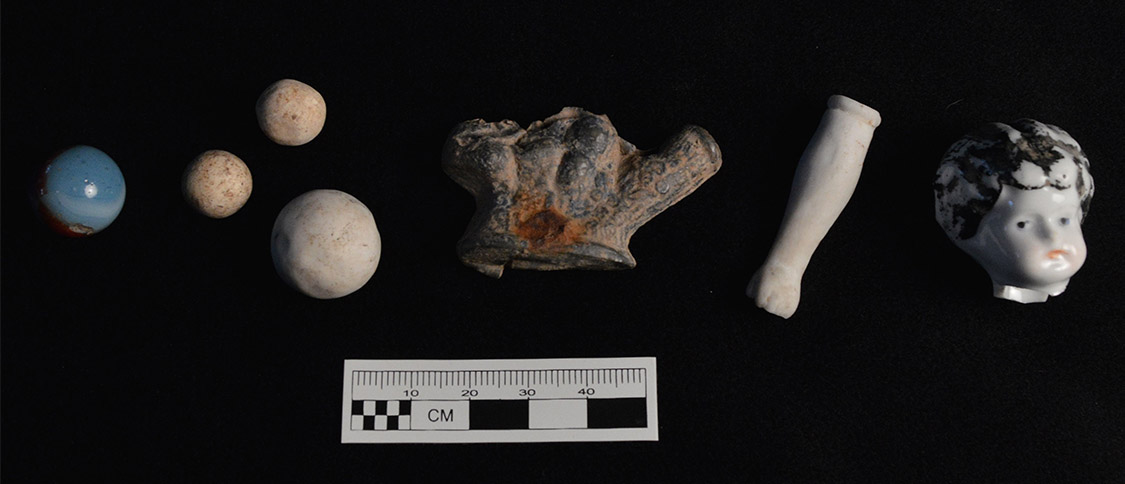Jodi Barnes, UAM Research Station
In 1991, two trowel blazing women, Margaret Conkey and Joan Gero, published Engendering Archaeology: Women and Prehistory. This groundbreaking book, along with what archeologists call the postprocessual turn that took place in the 1980s, changed the way archeologists talk about the past. This may sound strange more than 20 years later, but from this work we start to “see” women, children, and families in the past. Think back to the ways people have traditionally talked about prehistory — the most popular image is man the hunter. So for Women’s History Month, let’s celebrate the women of Arkansas’s past — the small game hunters, the weavers, the potters, the cooks, the ferry operators, the nuns, and the educators as well as the grandmothers, the mothers, and the daughters.

Women’s stories are less likely to be recorded in historic documents, which means that archeology, the study of things people left behind or discarded, provides new information about women’s lives through time. For instance, archeologists have debunked the idea of “man the hunter” and “woman the gatherer” and shown that American Indian women hunted small game as well as gathered plant foods. In bluff shelters in the Arkansas Ozarks, archeologists uncovered a number of perishable items, such as baskets or bags woven from plant fibers. The baskets and bags were used for cooking and food or seed storage. Dr. Elizabeth Horton’s research examines how women passed along the sacred tradition of basket weaving from mother to daughter.
The Sisters of Mercy — nuns who established a convent (3SB1088) in Fort Smith in 1843 — are a group of women often omitted from Arkansas history. The nuns came originally from Ireland, founded St. Anne’s Academy and St. Edward’s Hospital, and educated many generations of Fort Smith’s Catholic youth. During excavations at the convent, Dr. Jamie Brandon and Jerry Hilliard documented the religious nature of the Sisters of Mercy convent. They found a silver crucifix, a complete rosary, a saint’s medal, and a hinge from a cast iron pew kneeler. They also recovered a surprising artifact, a fired .44 caliber Webley center fire cartridge. Introduced in 1868, the .44 Webley round was used in the Webley RIC revolver, the standard service weapon of the Royal Irish Constabulary. The “pocket revolver” is not only directly connected to Ireland, it also would have been the perfect concealable, protective sidearm for a woman of the cloth on the Arkansas frontier.
Archeology can also tell us about the lives of enslaved women and house servants. At Historic Washington, a 19th century town in southwest Arkansas, Dr. Skip Stewart-Abernathy uncovered the kitchens where enslaved women lived and worked, along with related artifacts. Kitchens may sound like a stereotypical place to look for women, but they are intimate spaces that show the everyday lives of the cooks as well as their connections to the family they are preparing meals for. Across the state, in the kitchen at Hollywood Plantation (3DR26) in Drew County, Dr. Jodi A. Barnes uncovered fragments of plates and crocks, along with buttons, a thread spool, and a toothbrush head that provide insight into the daily routine of the African American woman living and working in that kitchen. She also found marbles, a bird whistle, and doll parts that help archeologists imagine the Taylor family children playing on the back porch of the plantation house.

